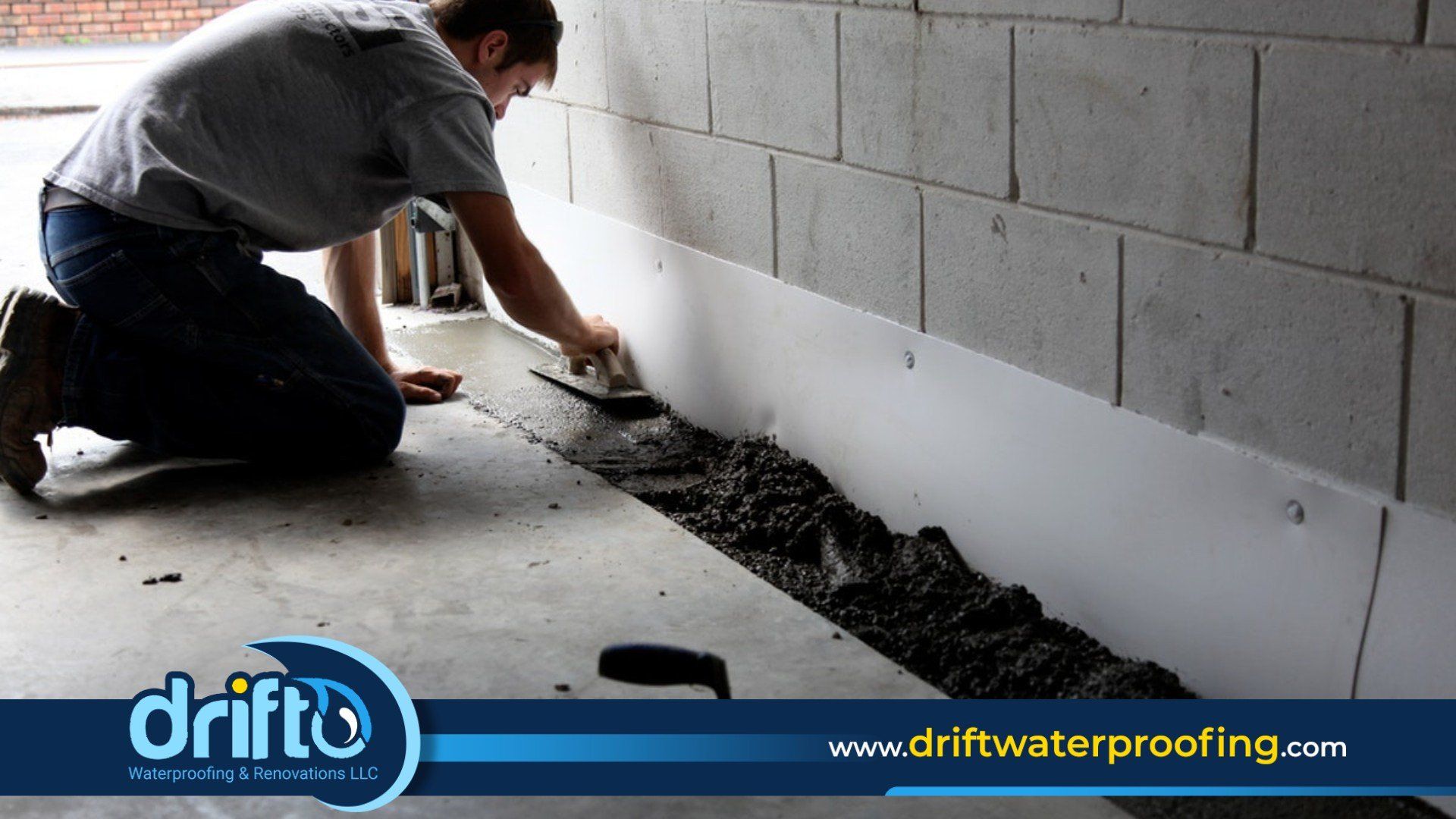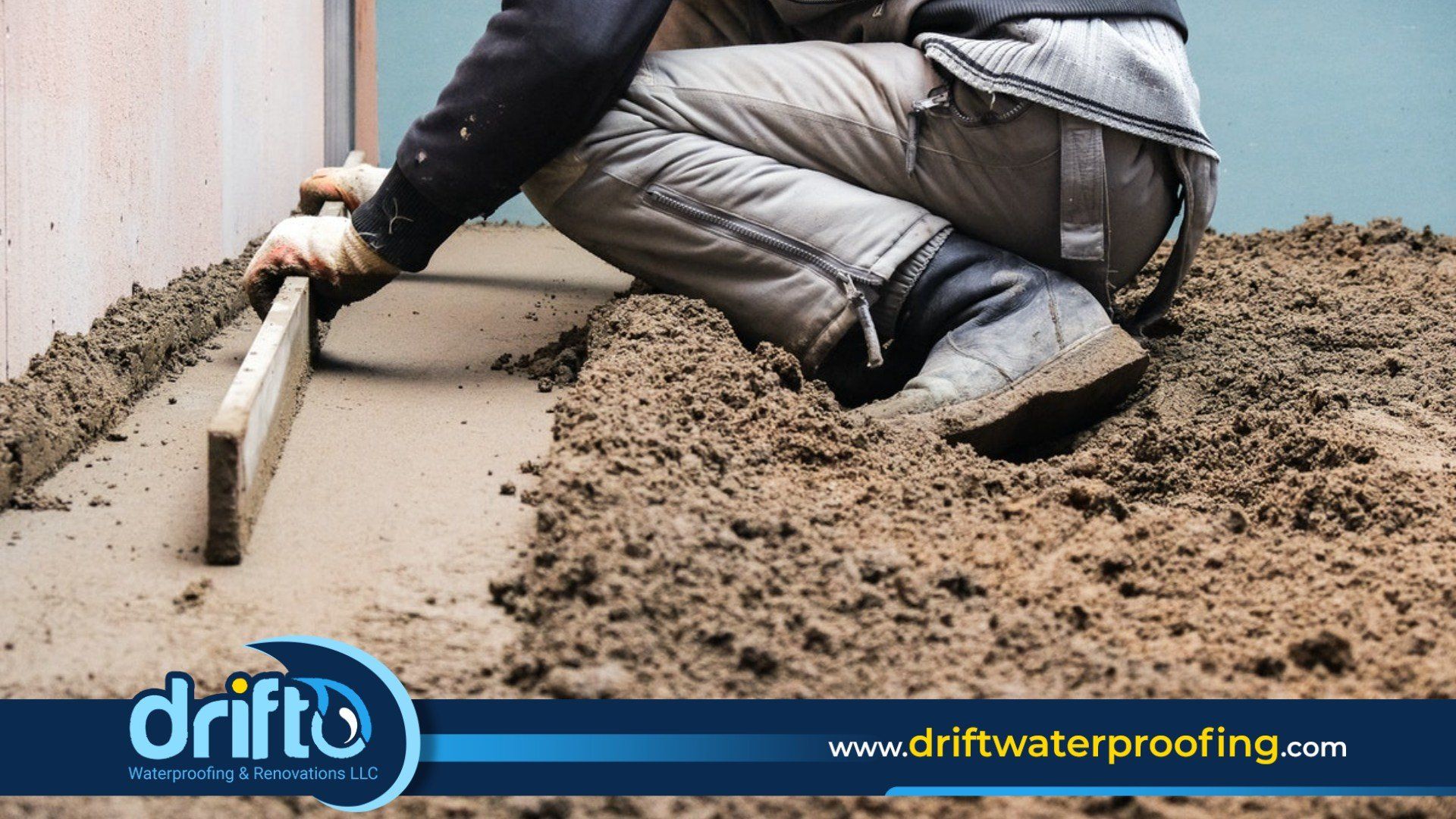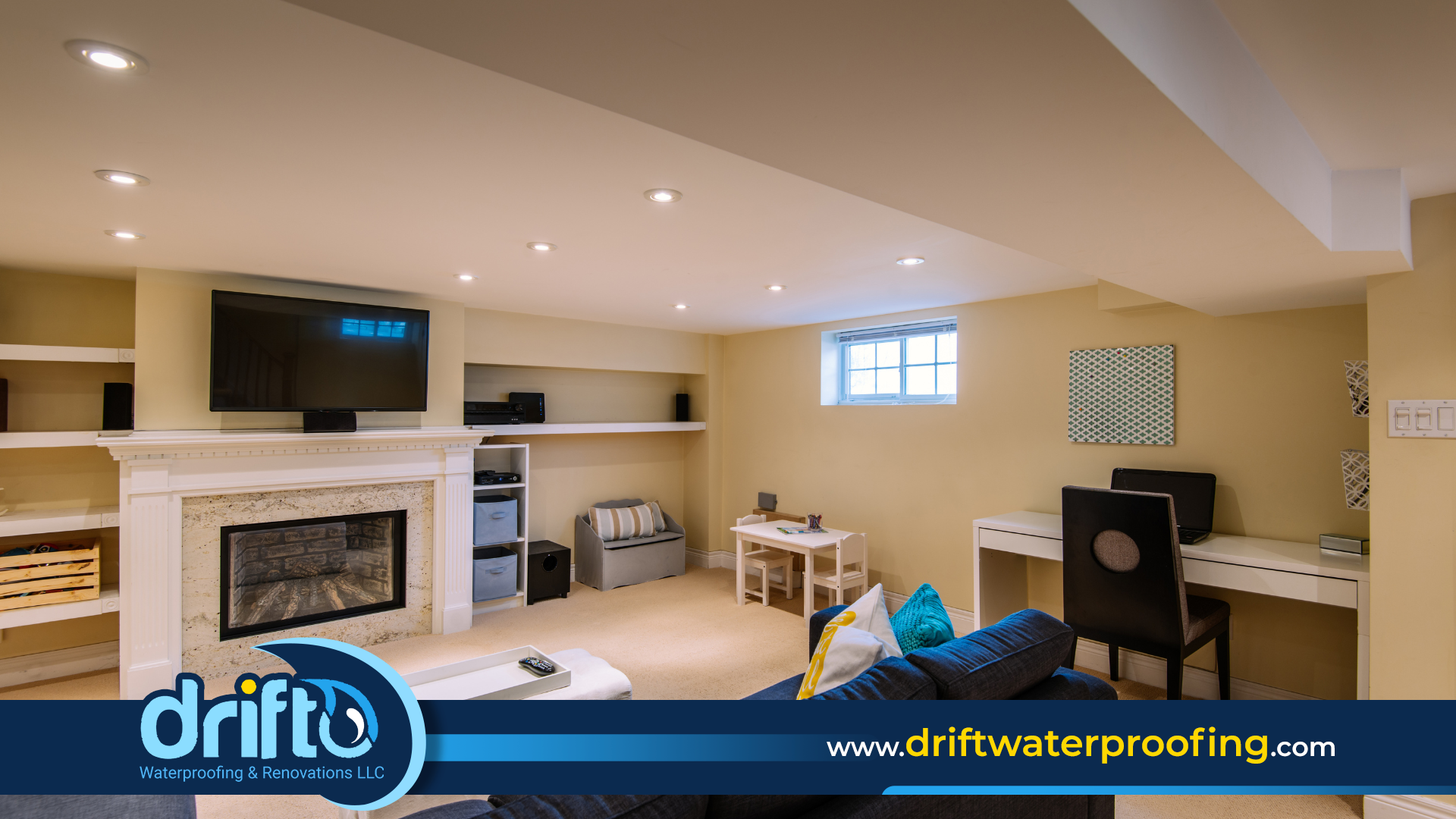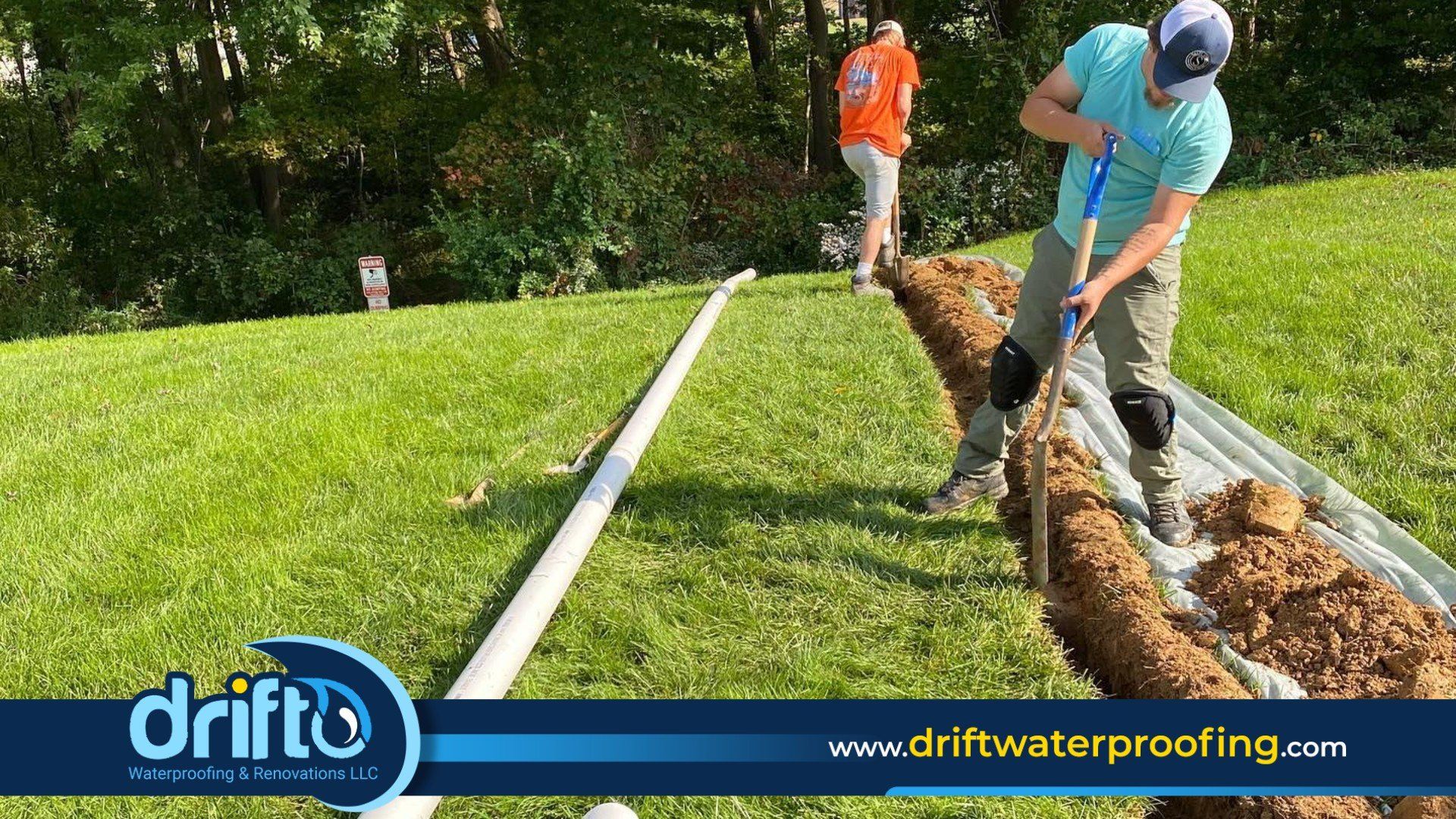Water damage can be devastating to your home, leading to costly repairs and renovations. Flooding is often caused by heavy rains or snowmelt that overwhelms the existing drainage system around your home. But did you know there’s a simple solution to help protect your home from water damage? French drains are an effective, efficient way to keep your home safe and dry. Let’s explore why a French drain is the best option for keeping water away from your property.
What Are French Drains?
French drains are long trenches lined with gravel or stone filled with perforated pipes used to divert water away from problem areas in your yard or home. They are also sometimes referred to as “trench drains,” “perforated drains,” or “drain tiles.” This type of drainage system is designed specifically to collect and redirect excess moisture away from structures and towards a suitable outlet such as a ditch, curb, or street.
How Do French Drains Work?
French drains work by absorbing surface rainwater before it can cause damage to the foundation of your house or other buildings on your property. The trench redirects runoff safely away from the area and down into a nearby ditch or storm sewer line. As the name implies, they were first developed in France during the 19th century to prevent floods and erosion along riversides and coasts.
Why Choose French Drains Over Other Solutions
While sump pumps are also commonly used for water diversion purposes, they require electricity for operation and can fail when power outages occur due to storms or other reasons. With a French drain system, you eliminate this risk since no power source is needed for them to work properly; they divert excess surface water from where it might cause damage without any additional input required from you. Furthermore, French drains provide more efficient drainage than other solutions, designed specifically for this purpose rather than attempting to handle multiple tasks simultaneously, as sump pumps do.
What are the benefits of having a French drain?
A French drain is an effective way to protect your home from flooding and water damage. But what exactly is a French drain, and why should you consider installing one? Let’s break down the benefits of having a French drain in your home so that you can make an informed decision about whether or not it’s right for you.
The Benefits of Having a French Drain
1. Prevent Flooding
Installing a french drain helps reduce the risk of flooding in areas prone to heavy rains or snow melt. By diverting excess water away from your home, it prevents any potential flooding damage in your basement or foundation walls.
2. Reduce Basement Moisture
Since french drains divert water away from your home, they help keep moisture levels low in basements and crawl spaces. This prevents mold growth and keeps air quality high throughout the house. It also helps keep pests at bay since standing water attracts them into your home.
3. Improve Water Quality
By redirecting runoff away from your house, you can ensure that nearby streams remain clean and healthy for wildlife species living there. This is especially important if you live near bodies of fresh water like rivers or lakes, as these ecosystems need clean sources of fresh water to survive and thrive
4. Increase Property Value
A well-maintained french drain system adds value to any property by increasing its appeal and reducing potential maintenance costs associated with flooding damage caused by improper drainage systems or clogged gutters. This makes it an attractive feature for prospective buyers looking for homes to purchase in wetter climates.
How much does it cost to install a French drain?
If you’ve noticed water pooling around your home, it might be time to consider installing a French drain. Also known as an “interior drain tile system,” a French drain is designed to direct groundwater away from your home and carry it safely off to another area. But before you commit to the installation process, it’s important to understand what goes into the cost of this project. Here are factors that affect the total cost of installing a French drain.
The Size of Your Home
The larger your home is, the more material will be needed for your new French drain system. This means that if you have a large property, you can expect to pay more than someone with a smaller one. It also means that if you only need part of your yard drained, you won’t need nearly as much material or labor hours as someone who needs their entire yard worked on – so keep this in mind when getting estimates from contractors.
Type of Materials Used
Regarding materials used for French drains, there are two basic options: PVC (polyvinyl chloride) or corrugated pipe. PVC piping offers flexibility and can be bent around corners easily, while corrugated pipe is made from metal and generally lasts longer but doesn’t offer as much flexibility. The type of material used will impact both labor costs and the overall price tag associated with this project.
Labor Costs
Labor costs can vary significantly depending on who you hire for the job and how long they estimate it will take them to complete it. Make sure to get multiple bids from different contractors so that you can compare costs and find one that works with your budget. Keep in mind that some contractors may charge by the hour while others may charge by the job – so make sure to ask about their billing structure before signing any contracts.
How do you maintain a French drain?
Protecting your property from water damage is essential to a happy and healthy home. One way to do this is with a French drain. A French drain is a trench filled with gravel or rock that redirects water away from your home's foundation. To ensure it works correctly and keeps your property safe, you must regularly maintain your French drain. Let’s take a look at what needs to be done.
Cleaning Out Leaves and Debris
The first step in maintaining your French drain is to remove any leaves and debris that may have accumulated in the trench over time. This includes anything that might block water flow through the drain, such as twigs, rocks, or other obstructions. To do this, you’ll need to use either a garden trowel or a shovel to scoop out all of the material in the trench. Once you’ve removed everything, give the trench a good rinse with a hose or pressure washer, so it’s free of all debris and dirt.
Check for Blockages
After cleaning out leaves and debris, you should also check for any blockages in the pipe itself. These can occur if roots or other foreign objects get stuck inside of it, blocking off water flow. If you find any blockages, you can usually clear them out yourself by using a long piece of wire or snake tool to reach down into the pipe and break up whatever’s causing the issue. If it’s too difficult to clear on your own, call an experienced plumber who can help with more advanced techniques like hydro-jetting or snaking tools with specialized attachments.
Inspecting For Cracks
Finally, inspect your French drain for any cracks in either the pipe itself or in the surrounding soil around it. If there are cracks present, water could leak out before reaching its intended destination—which defeats the purpose of having a French drain in the first place! To fix these cracks, simply fill them in with some fresh soil or patch them up with epoxy glue if they are particularly large ones that need extra reinforcement.
Conclusion
Maintaining a French drain may seem intimidating at first glance, but it doesn’t have to be! By following these simple steps—cleaning out leaves and debris, checking for blockages, and inspecting for cracks—you can keep your property safe from water damage quickly and easily! Don’t forget, though; if any maintenance tasks become especially difficult or dangerous, don’t hesitate to call an experienced plumber who can help ensure everything gets done right!
Contact Drift Waterproofing & Renovations Today!
Drift Waterproofing & Renovations will do everything we can to ensure your experience with us is excellent.
Request A FREE Estimate
Request a Free Estimate Form
Checkout Recent Post

Got a Question? We’re Here to Help.
You can arrange an appointment or make an enquiry by phone or email, orget in touch to us via our contact form.



